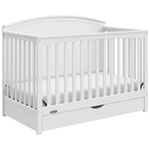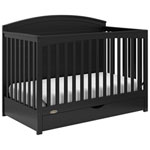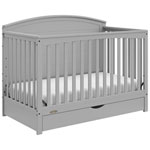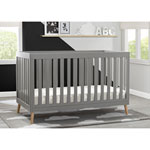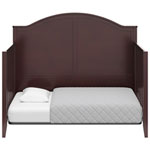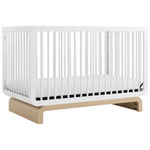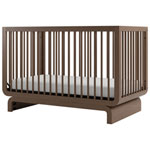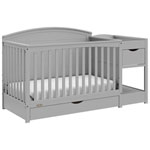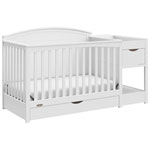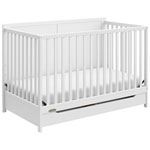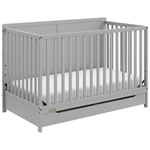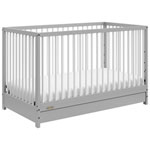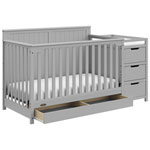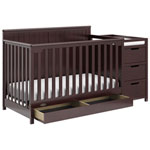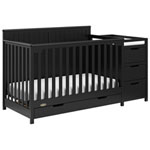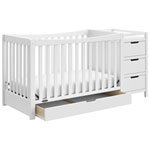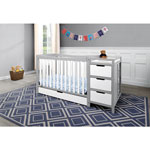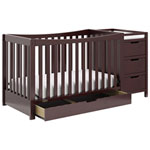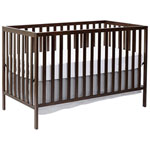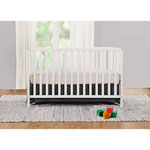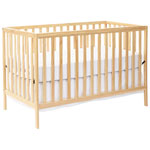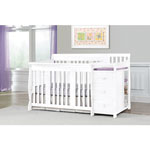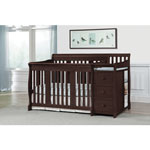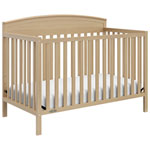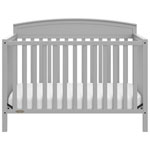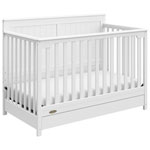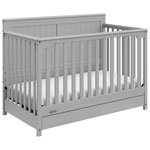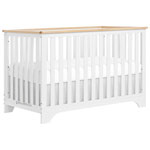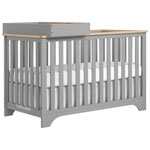Baby Cribs
Shop by colour
Shop related furniture
Shop accessories
Our Holiday Price Guarantees
Shop deals early knowing that the price of any product with a "Boxing Day Price Now" or "Lowest Price of Dec." badge won't go any lower. If it does, we'll refund the difference. Guaranteed.
Cribs: Baby’s First Bed
Cribs are usually one of the first purchases expectant parents make for the nursery. After all, sleep is very crucial to your baby’s development, so choosing the right crib is an important nursery furniture decision. Best Buy offers a wide selection of cribs so you can find the one that best meets your needs.
Tips for Choosing the Right Crib
Consider the materials
Baby cribs are made with solid wood and metal, and include four stationary sides. Cribs come in a huge variety of different finishes, colours, and styles, so choose the one that best fits into the nursery décor.
Look into getting a convertible crib
Convertible cribs grow with your child, giving you the option to transform it into a daybed, toddler bed, or double bed when the time is right. Check the conversion type to see how many bed positions the crib can convert to. A 3-in-1, for example, will convert to a standard crib, daybed, and twin size bed to accommodate your growing child. There are also 2-in-1 and 4-in-1 conversion cribs available.
If the crib is designed to convert into a full-sized bed, check to see if it includes bed rails. If the convertible crib doesn't include these rails, which you'll need in order to expand the bed to full size, you'll have to purchase them separately.
Opt for a crib changer combo
Some cribs come with a crib changer, usually equipped with a changing pad, drawers, and shelves. Some crib changers are detachable and can be used for storage once the crib has been converted into a bed and your child is no longer in diapers.
Look at the manufacturing date
Newer cribs should follow the latest safety regulations, but if you pick up an older crib check when it was manufactured. Cribs made before September 1986 won't meet the current safety regulations, so they should not be used. Also, stay away from drop-side cribs, which have a side that can be lifted up to move baby in and out. This crib design is not considered safe and should be avoided.
When to change beds
Bassinets, cradles, and cribs are each designed for specific stages of your baby's growth and development. Read the manufacturer's guide and follow the guidelines around recommended age, weight, or height limit, whichever comes first.
Some other rules of thumb:
- Move from a bassinet to a crib or cradle when the baby can roll over
- Go from a cradle to a crib when your child can push up on their hands and knees
- Transfer from a crib to a junior bed when your little one can climb out on their own or is taller than 90cm (35"), whichever comes first
For safety, it's also best to use a fitted bottom sheet that's specifically designed for the mattress size. When your baby can sit upright or push up on their hands and knees, you should remove any mobiles or toy bars and shift the crib mattress support to its lowest level.


